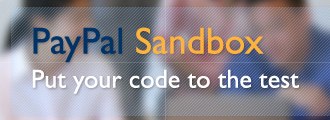In October 20011, PayPal debuted X.commerce, a fabric that weaved together PayPal, eBay and other commerce related APIs in the eBay family. But developers have been demanding more features and simplicity from PayPal’s framework for adding payments technology, and today, the company is separating its developer platform from X.commerce, and relaunching an independent destination on PayPal, here, that includes a number of new APIs, more simple features and more.
PayPal will still be integrated in X.commerce, but the company decided that they needed to have a standlone developer platform for just payments APIs. And the company has been fairly honest about the fact that developer tools have not been up to the mark. “Our tools haven’t kept up with the bleeding edge of innovation that the industry expects of us,” the company writes in a blog post. But with PayPal CEO David Marcus restructuring the company to operate more like a startup, this is changing. And PayPal realizes that they need to satisfy and provide easy to use APIs for developers in order for their payments product to actually reach consumers.
First, PayPal is expanding its mobile library so that developers can integrate a more frictionless payments experience at checkout within an app. PayPal is allowing for customers to never leave the developer’s app experience to pay. Now developers can also integrate card.io (which PayPal acquired last year) to allow customer to scan a credit card for a payment.
Another area of change is in actually being able to integrate a PayPal button into an app. Via the new JavaScript PayPal buttons, developers can add PayPal by copying and pasting five lines of code into their website, shopping cart or a QR code.
As PayPal’s CTO James Barrese explains, the primary goal of this update was to make it easy to integrate PayPal into a site or app in seconds. The focus is on creating a “simplified experience for developers to take advantage of the power of PayPal without having to do as much work.”
Additionally, developers will also have access to new APIs built on REST, OAuth, and JSON. The company is also now tokenizing credit cards for developers so that the company handles PCI compliance for them. The new PayPal developer platform offers a single location for the company’s sandbox, tools, documentation, and resources.
PayPal is catching on to the idea that creating a simple, easy to use product for developers will help them compete against some of the new startups in the payments space like Square and Stripe. But what PayPal does have going for them is its 123 million account holders, which represents massive reach. If PayPal can start selling developers that its offering is as easy to use as some of its competitors (i.e. Stripe), then this could be a big win for the payments giant.
